Although I have been a keen photographer for over sixty years, I have rarely taken a landscape photograph which pleased me. There have been some rare exceptions and one, which was really a seascape, did win a prize in a competition a few years ago, but that was an outlier. On a recent visit to Tasmania, I renewed my acquaintance with the art of landscape photography.
I realised early on from my personal efforts that good landscape and wilderness photos require real commitment and dedication in the photographer. They have to be prepared to go out in all weathers, at unsociable hours. They have to walk and climb long distances to reach the magic vantage points, and then wait for hours or even days for the perfect light and weather. Fortunately, there are many who are prepared and able to do this.
Formidable reputation
One such photographer was Peter Dombrovskis. Peter was born to Latvian parents in a refugee camp in Germany in 1945. His father had died in the war, and he migrated to Australia with his mother in 1950. Luckily, they settled in Hobart, Tasmania. He took up photography at an early age and was encouraged by his mother and mentored by another Tasmania-based wilderness photographer, Olgas Truchanas. In a few years, Peter had built a formidable reputation and was publishing his work in books and calendars. Sadly, his life was cut short in 1996 when he died while photographing in the South-West Wilderness area.
For me, Peter is up there with the very best wilderness landscape photographers. Quoting from Wikipedia:
“His most famous photograph is Morning Mist, Rock Island Bend, Franklin River, The photograph portrayed a section of the Franklin River which was to be submerged by the proposed Franklin Dam, and it highlighted the visual appeal of the Franklin River during the contentious ‘No Dams’ campaign of 1982. In 1983, Dombrovskis published a book, Wild Rivers, co-authored with Bob Brown, which exemplified his skill in photographing the Gordon and Franklin rivers.”
Not only did Peter’s superb image significantly contribute to the public awareness of the stunning beauty of the Gordon/Franklin Rivers area, it led to the abandonment of the hydro dams project. His pictures of the region generally are recognised as playing a major role in the South West Wilderness area of Tasmania being recognised as a World Heritage by UNESCO.
Heavy going
Peter started his photography with a Zeiss 35mm camera, and he moved onto a medium-format Rolleiflex SL66 in 1974 and then a 5×4 Linhof Technika two years later. The majority of his iconic photos were taken on sheet colour transparency film, using the Linhof. He would have used a tripod with the Linhof so it would have been heavy moving on foot through the wilderness with his camera gear and his camping equipment. The rainforest areas are always wet, and the forest floor is deep in moss, fungi, and tree debris as some tree species live for thousands of years.
Fortunately, Peter’s photos have been preserved in the collection of the National Library of Australia and can be viewed online here.
Furthermore, the National Library of Australia has published a superb big, high quality, hard cover book of 177 of his photos which is available through Amazon Australia (amazon.com.au) and Booktopia (booktopia.com.au) for just A$30 (US$20). A great bargain.
As you view Peter’s stunning images, it’s important to realise that they are big colour transparencies and what you are seeing is what he composed and took. No cropping. No post-processing. Every image carefully crafted. So different to how most photographers work today.
No deterrent
I realised years ago that there was zero chance of my ever taking wilderness photos of Peter’s standard. It’s easy for me to say that I did not have the opportunity to access the wilderness areas he did, but the reality is that I also do not have the eye, the patience, or the fitness. However, none of this has deterred me from taking a camera with me when I have visited Tasmania over the years.
The most spectacular wilderness areas of Tasmania are on the western side of the island, but the eastern also has very scenic areas such as the Freycinet Peninsula which I visited in December 2022. My photos from this trip were featured in a Macfilos story last year.
The trip two years ago was so enjoyable that we decided to visit the large western wilderness areas on a future adventure. In 2022, we took the Mini on the overnight ferry from Geelong, west of Melbourne, to Davenport on the north coast of Tasmania. The drive down to Geelong from home (in Terrigal NSW) takes ten hours, almost wholly on motorway, through rather tedious scenery. And the ferry crossing can be very rough, as well as expensive, even for a Mini.


Flight to the south
So a few weeks ago we drove down to Sydney Airport and then flew to Launceston in Tasmania. Simple and with no risk of seasickness. From there, we drove in a rental SUV to Cradle Mountain Lodge in the Cradle Mountain-Lake St Clair National Park — part of the World Heritage Wilderness Area.
Originally, this trip had been planned for late November last year but was postponed. November would have been early summer, but April is early winter, and it was getting colder, particularly overnight. The weather is very changeable. As it says in the Cradle Mountain Visitor’s Centre, “The weather — beautiful one minute and deadly the next”. It is the wettest place in Australia, with rain on average 240 days every year.
I visited Cradle Mountain with my family way back in 1988. Then it was popular, but not nearly as popular as it is today. Now, tens of thousands of visitors come to the park every year. It was reasonably busy during our visit, but the infrastructure for visitors is very well-organised. Cars are not permitted in the park during daylight hours. There are car parks by the Visitor’s Centre at the park entrance, and shuttle buses take the visitors on the 15-minute drive down to Dove Lake. It seems to run very smoothly. Mass tourism done well. As soon as we walked away from the scenic ‘hotspots’ by the lake’s edge, the visitor numbers soon thinned down.
On the boardwalks
Back in 1988, some walking tracks were boardwalks, but mostly it was ‘free’ walking on and off the worn trails. Now there are many walks with boardwalks for all or part of their length. Dove Lake is the starting point for the six-day Overland Walk through the South West World Heritage Wilderness Area as well as other shorter walks including the very picturesque Dove Lake circuit which we walked on our second day.
Dove Lake and, in particular, the Boathouse with Cradle Mountain in the distance, must feature in the photos taken by every visitor to the park. It’s very difficult to take an original photo there, so I make no claims as to the originality of my photos below.
The Cradle Mountain Lake St Clair National Park is the most accessible part of the large World Heritage Wilderness area, which is the reason it is so popular with visitors. To go deeper into most of the wilderness, you have to walk in or be taken in by light aircraft. There are almost no roads into or across the area.
Insert photos of Cradle Mountain here.
I took my Leica Q2 on the trip. Of course, it proved to be almost the ideal travel camera as it and its predecessor, a Q, have done for me over the past seven years. However, there were a few times on this trip that I wished that I had a camera with a longer lens. I could have brought my X Vario, or even my, underused, Lumix S5, but I believe in travelling light, so a bag full of camera gear is never an option for me.
Tripod trials
One item of gear I did wish that I had with me was a tripod to enable longer exposures of running water and in the rainforest when I wanted to maximise depth of field. I do own a superb Manfrotto. It’s a heavyweight model I have owned for many years and probably used about 50 times, most of which were in my brief affair with film photography and Hasselblad. My son now has the tripod. I hope that he is finding it useful. There is no way I was ever taking it to Tasmania.
Before flying to Tasmania, I visited the local, very well stocked, Camera House store and sized up lightweight, carbon fibre travel tripods. In the end, I decided that while one would, perhaps, be useful for this trip, it was something I could really do without longer term. An unusual decision for me to make. Perhaps wisdom does kick in as one ages.
After a few days’ walking around Cradle Mountain, with only one wet day, we drove down in pouring rain to the coast and sleepy Strahan, the beautiful Macquarie Harbour and the majestic Gordon and Franklin rivers. We stayed in Strahan for four days exploring, including boating out to the notorious Hell’s Gates at the mouth of Macquarie Harbour and also down the Gordon River.
From Strahan we drove 300 km through the spectacular World Heritage South Western Wilderness area down to Hobart on the south coast. I had high hopes that I would take some spectacular vista shots from this very winding road. What a disappointment. It rained heavily for 250 km of the drive. We were driving in low cloud until we came down from the mountains, but at least there were very few other vehicles on the road. A small consolation for a very wet, white day. It’s called rainforest for a reason.
Flight cancelled
The highlight of our stay in the south was to be a flight on a light aircraft to a dirt airstrip at Bathurst Harbour, deep in the most remote area of the South West Wilderness, for more walking. I had fond hopes of taking some original photos in this special, remote location. Not Dombrovskis standard but still good.
The flight had been booked and paid for, and we’d packed our cold and wet weather gear. Then on the afternoon of the day before we were due to depart, the phone call came — “Flight cancelled due to weather forecast! “ I pleaded, “it’s so sunny here today”. The caller, from the wilderness airline, patiently explained “That’s true, but that’s Hobart. Out there at Bathurst Harbour today it’s very low cloud, and it’s raining heavily. We have a webcam by the strip”. And he was right because the following day the clouds and rain moved into Hobart.
So the next day instead we went on a small boat under stormy skies along the majestic dolerite cliffs of the south coast of Bruny Island looking at seals, sea eagles, albatrosses, and crayfish (lobster) boats bobbing about in the swell.
Despite the two disappointments, the two weeks in Tasmania were a wonderful, fun trip and I came back with a few pleasing photos, a couple of which should make big prints for the house. Perhaps, as satisfying, the fitness app on my iPhone congratulated me on achieving my daily walking targets most days. A win, win.
Read more from John Shingleton
Visit the author’s website
Want to contribute an article to Macfilos? It’s easy. Just click the “Write for Us” button. We’ll help with the writing and guide you through the process.

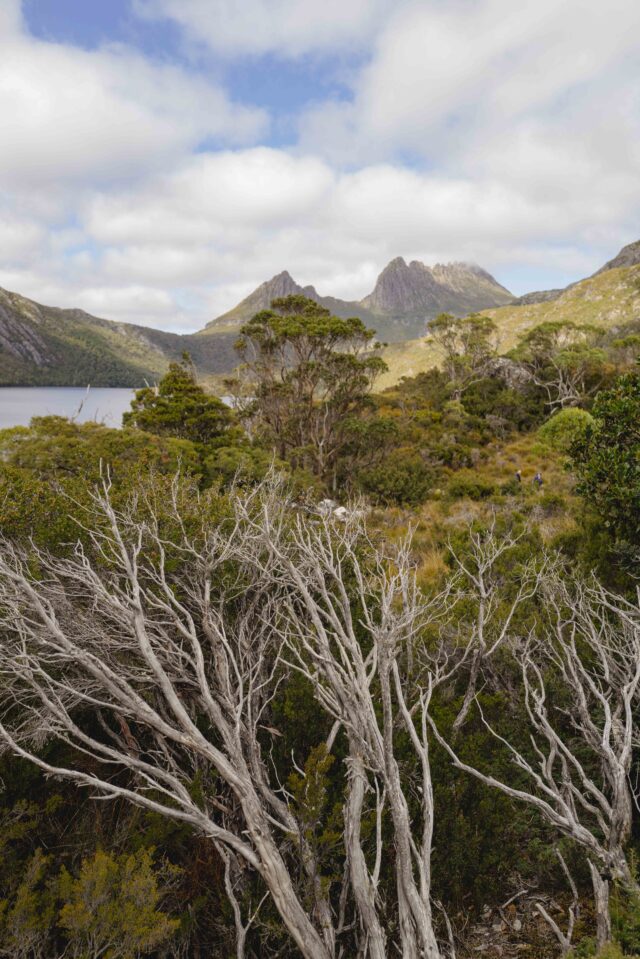

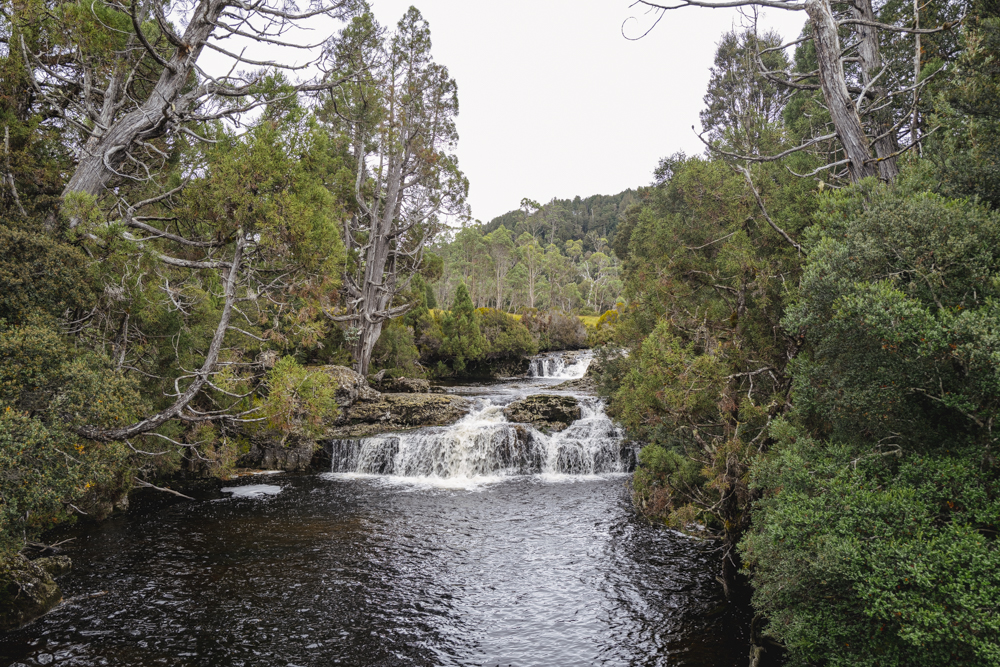
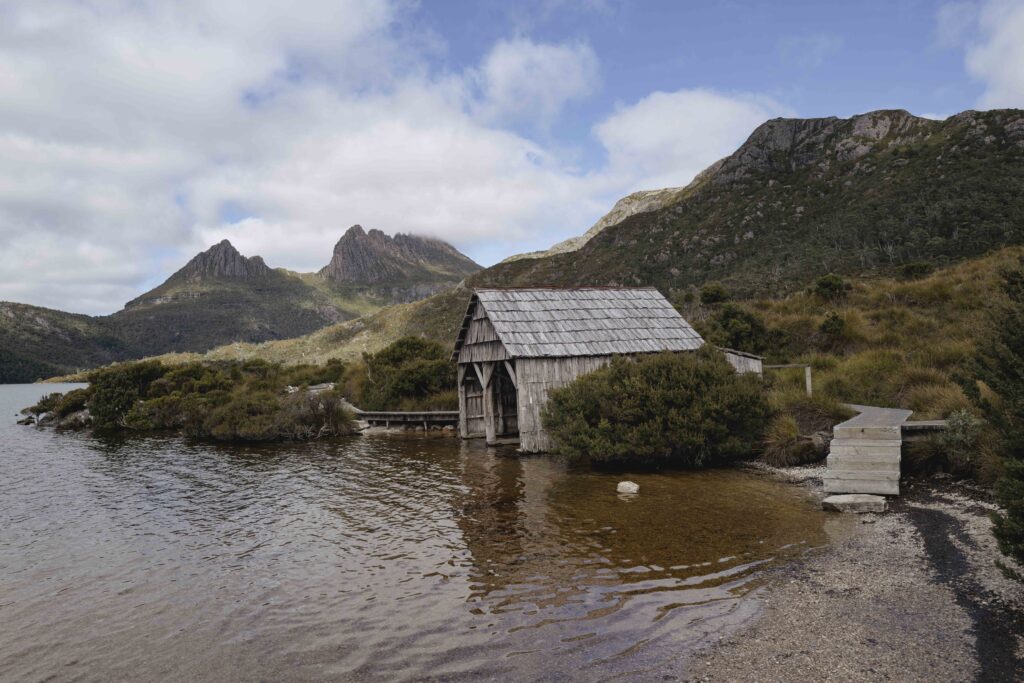
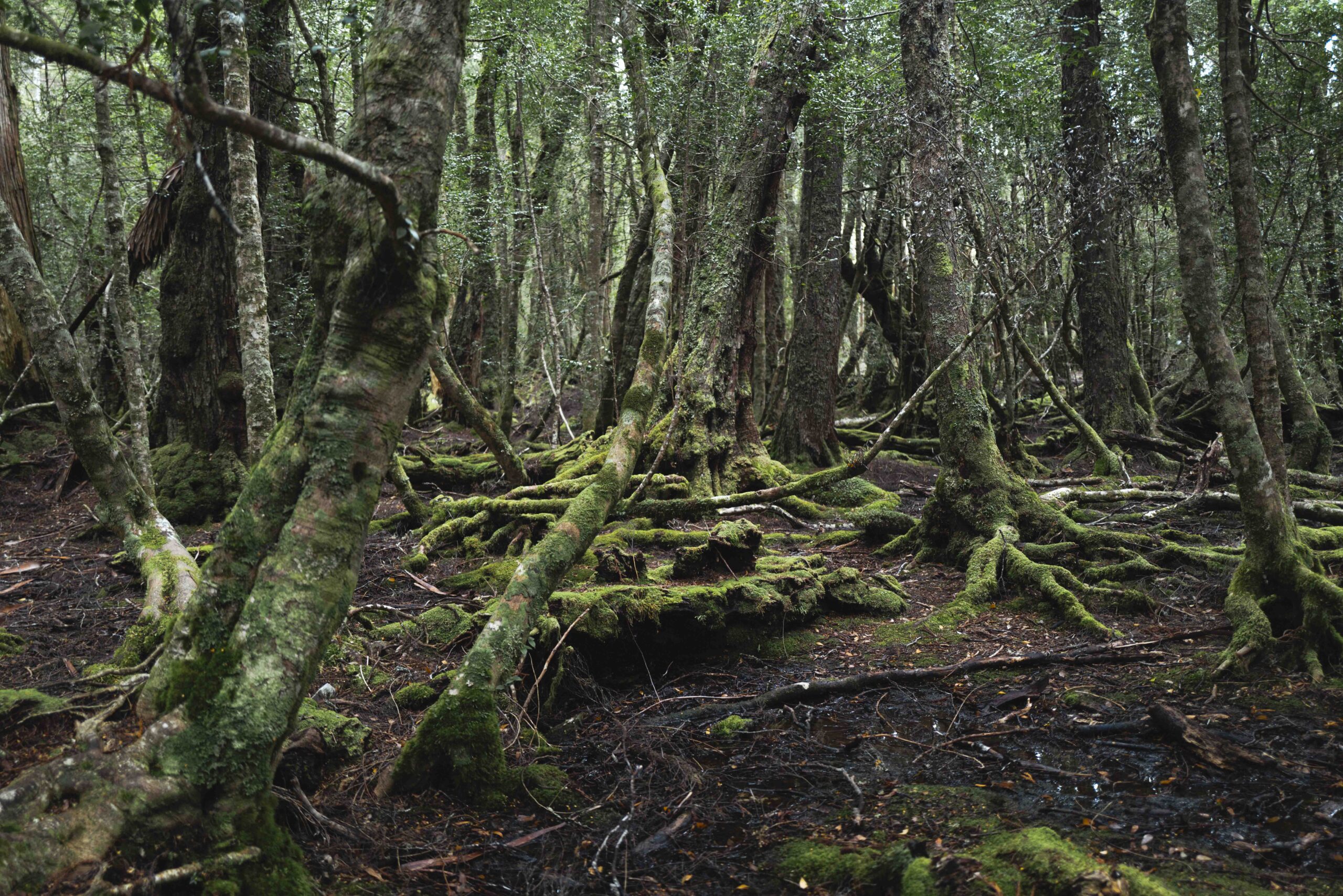
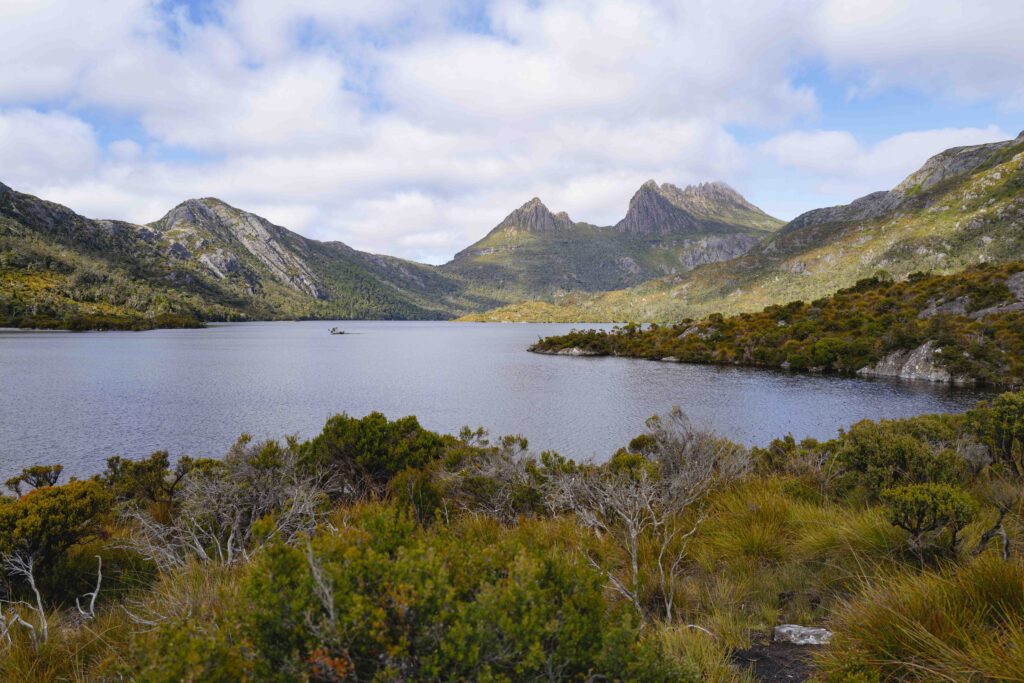
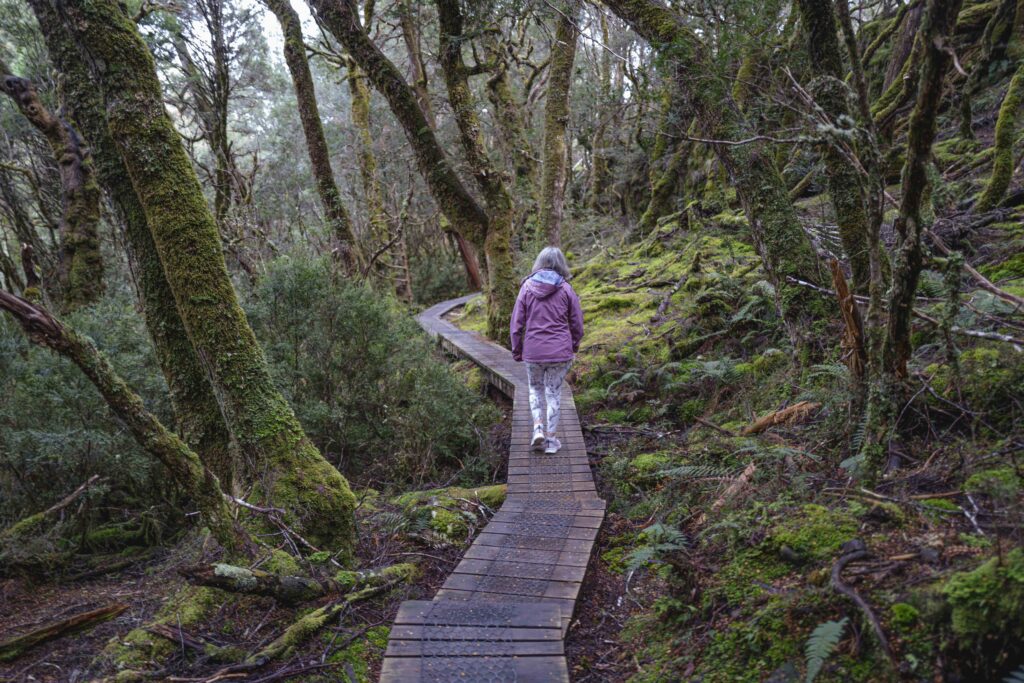
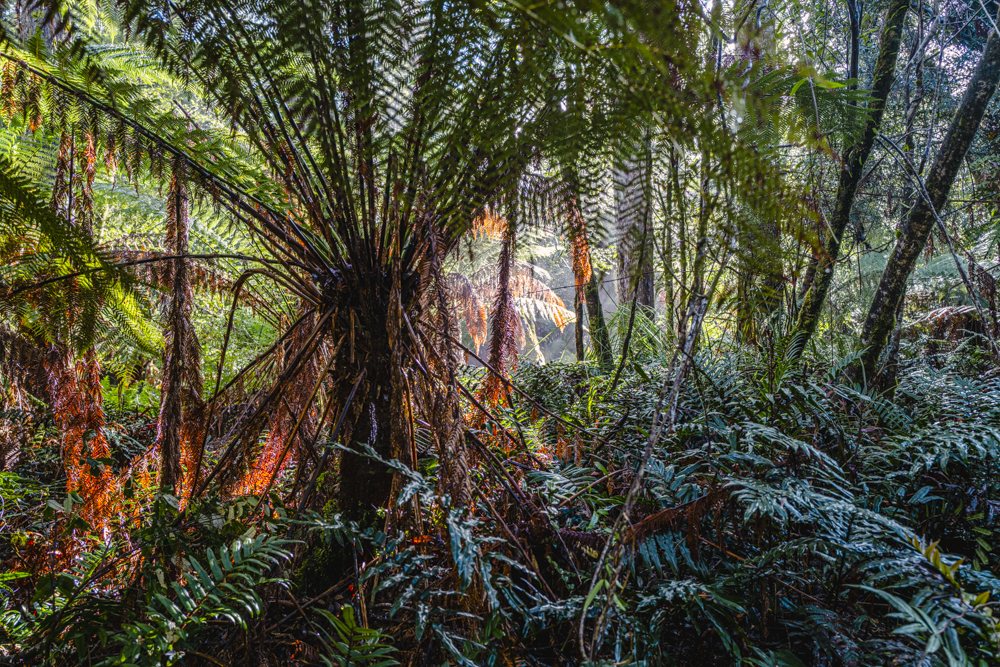
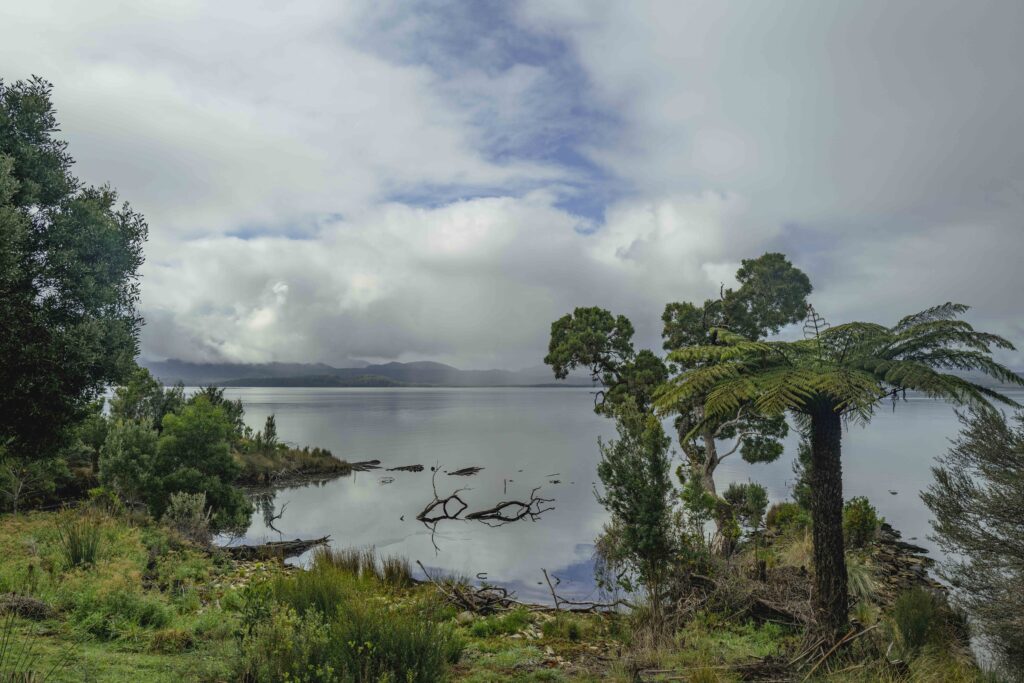
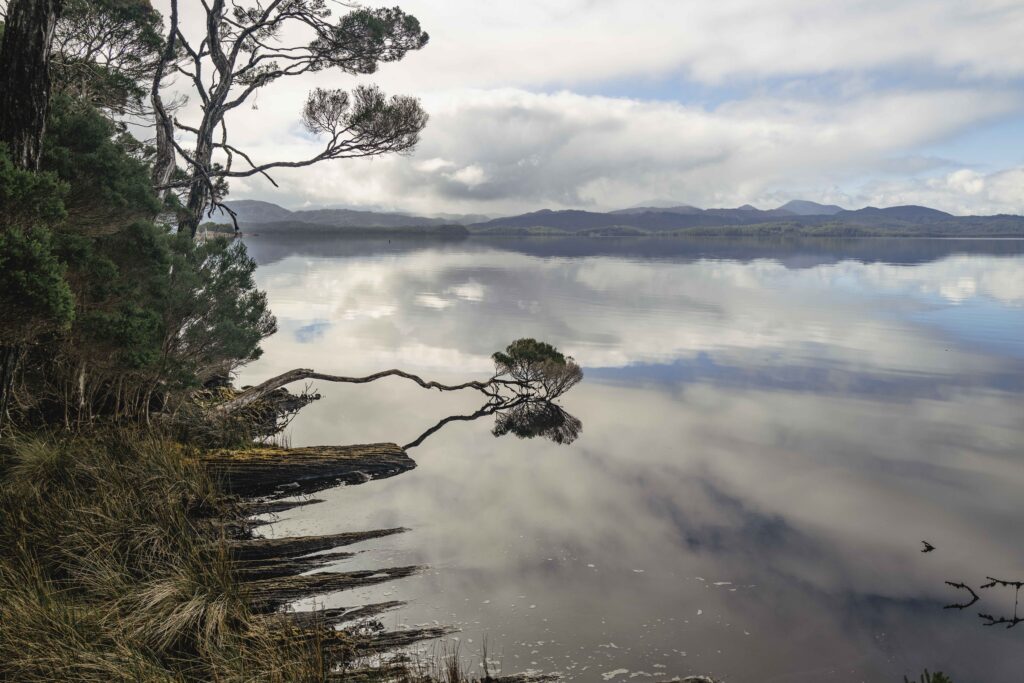
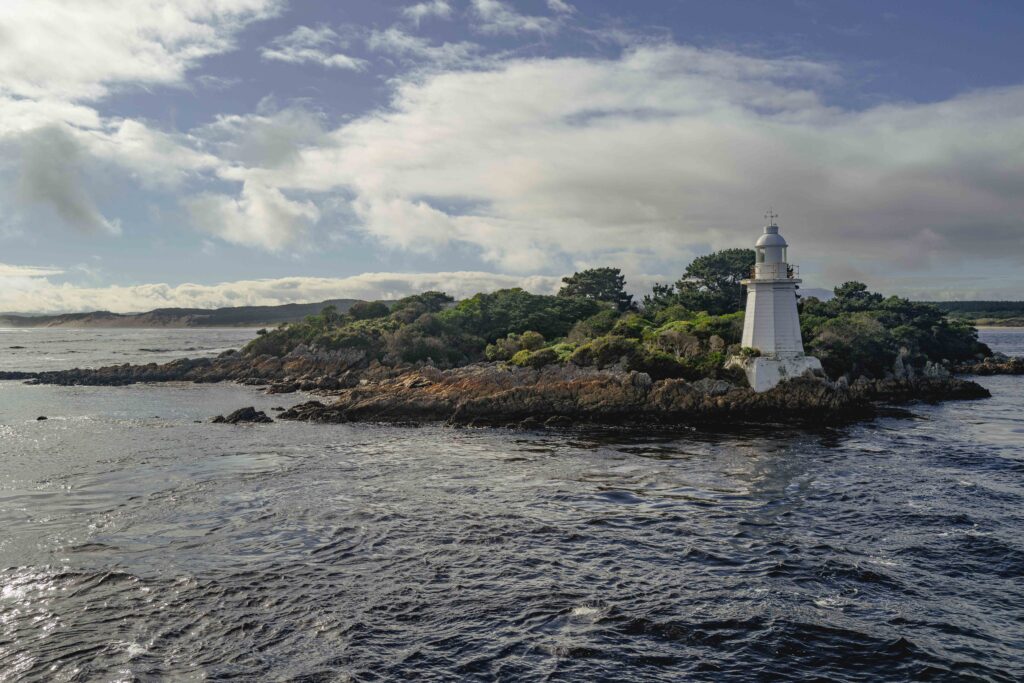
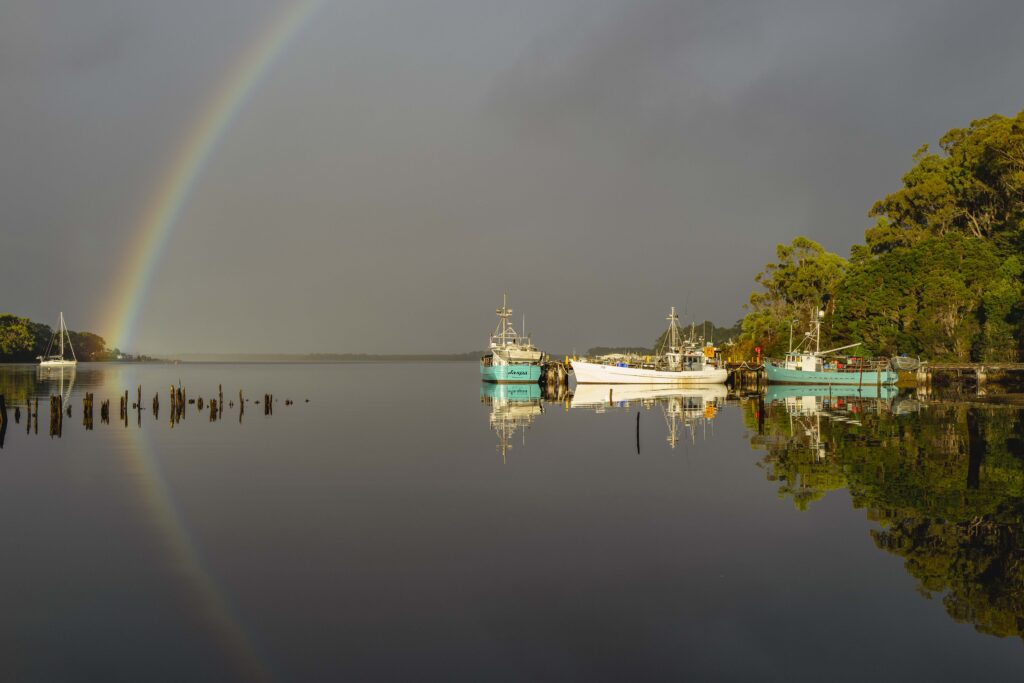
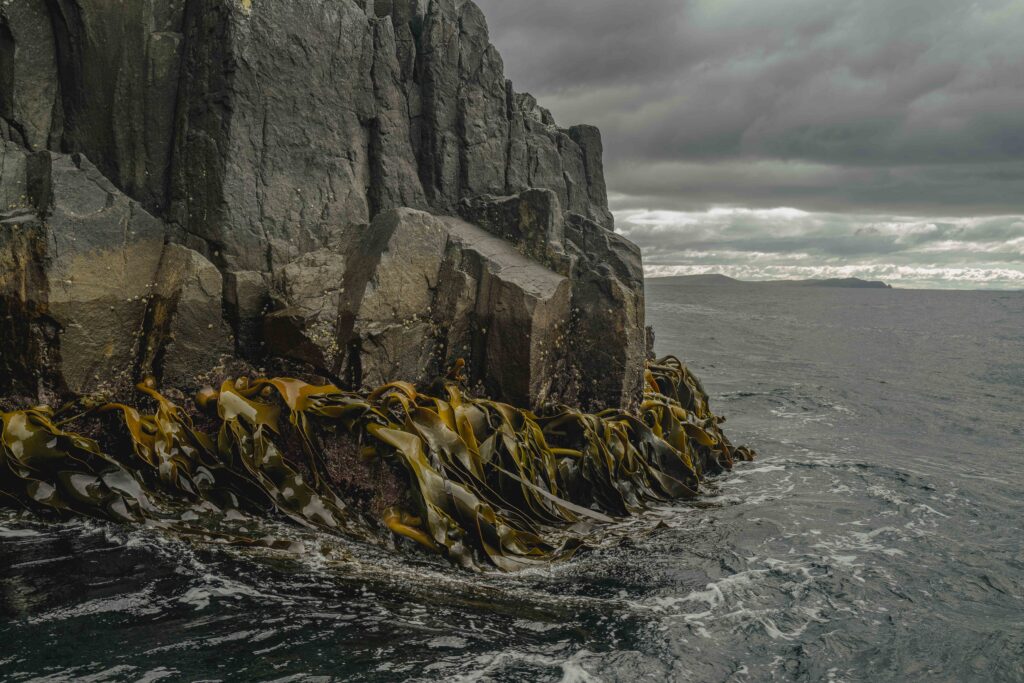
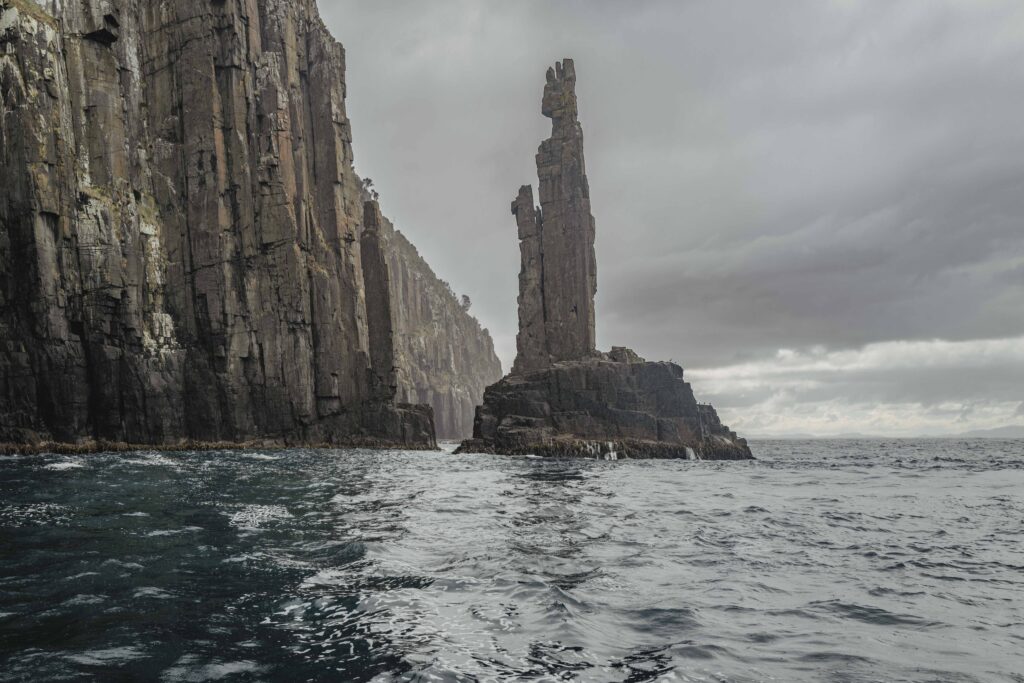
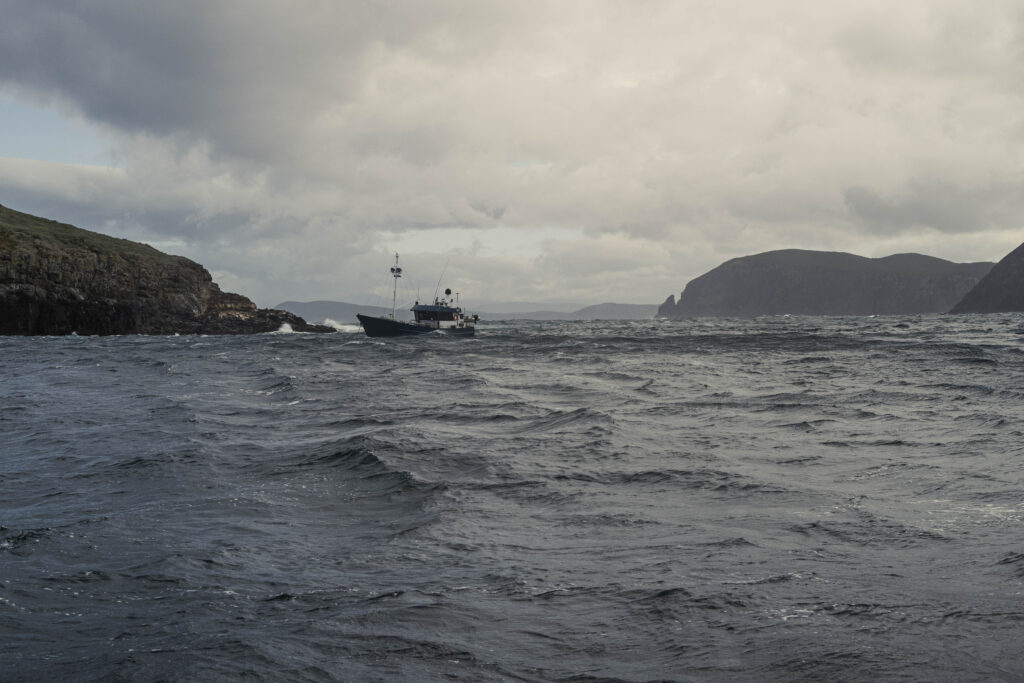




Thanks John, to you and Mike, for those fine photos. To borrow from Dr Johnson, those boardwalks would be “a dance upon carpets, compared with the toilsome drudgery of”, sloshing through the Buttongrass plains of the Overland Track. Why we didn’t get Trenchfoot, I don’t know.
My late friend Erik lived in Hobart. We often spoke of Peter Dombrovskis and his photographic skills. How did he get the exposure just right, then transfer the image to paper as accurately as he did. Erik was a retired Process Engraver (pre-digital) and knew whereof what he spoke. Thank again and keep well. Fred Hepworth
In playing down your skill, you do yourself a disservice John. There are some fabulous photos in your article, photos that would have made me proud if I had taken them. You absolutely must do more landscape photography.
Thanks for the many appreciative comments. They will motivate me to take more landscape photos.
Looking back over my 60 plus years of taking photos I now realise that my photograhy improved beyond measure in the digital era-really post 2005-and this was not down to the gear or the medium but the fact that so many examples of great photography are easily accesible to me on the internet and so I have benchmarks to aspire to.
Sadly over the years I had travelled extensively including to many wonderful locations where I unwittigly squandered the opportunity to take really good, original landscape photos. Instead I took, in the main, what I now realise were ordinary “snaps”.
I’ve left my run very late in life but now I’m trying to make up for some of those wasted opportunities.
John, you might be a little older than me, unless I count the snapshots I took as a child as part of my photographic experience.
I did take landscape photos along the way. My regret, if any is warranted, is that I did not travel more when I was younger. But there are reasons I did not, including providing for my wife and raising a family and the work that was necessary to accomplish that.
And it paid off! Because my adult children love to travel and have encouraged me to do the same. Several times it has been to join them somewhere in the world. At 75, I can hardly wait until retirement, and more travel.
So, look forward, not backward!
The book recommended, Journeys Into the Wild: The Photography of Peter Dombrovskis is stunning and at $30 AUD is truely a bargain. Thank you for your recommendation. The Amazon Australia link is here. https://www.amazon.com.au/dp/0642279071?ref_=pe_19115062_429603572_302_E_DDE_dt_1
Sorry this is late, this SOLAR STORM, causing havoc! John your photos and written word are always superb. I have to ask one question, did any of those Tasmanian devils ever interrupt your journey? Thank you aLso for a new book introduction that my grand daughters can order me for Father’s Day in June.I have always wanted to slow down and spend more time composing, and using a tripod should be what I am doing. I remember a photo by Mike or William at one of Leica London meetings, where in background a member carrying a tripod with a3f on his shoulder, guy looked older than me so if he can do it so can I.John please keep these articles coming, we appreciate you, Jono, William , Mr English , Mr Cooper Mike et Al!
John, sadly the Tasmanian Devil is endangered. Not due to any human activity but due to a highly contagious facial tumour which is caused by a virus and spread by touching which the devils do when they clash. The population had been very badly hit in the past 30 years and now there is a major government program to Save the Devil.
The Devil is not a sweet cuddly, furry animal-quite the reverse-but it is unique and special so let’s hope the program suceeds.
The Devil Facial Tumour disease certainly has had a catastrophic effect on Tasmanian Devil populations, but it’s simply not true, John, to suggest that human activity has played no part in the species being currently classified as endangered. They continue to be killed on our roads and are impacted by loss of habitat and other factors. I wish this was not the case, but it is the reality here in Tassie.
Tasmanian Devils make some fearsome noises but they’re actually timid creatures, more frightened of us than we are of them. They’re not cuddly (unless hand reared, perhaps), but they also aren’t any sort of threat to humans.
Peter Dombrovskis’ choice of Linhof was a Master Technika fitted with a right angle reflex attachment. Unlike many Master Technikas, his example was not fitted with a coupled rangefinder as he preferred to compose via the ground glass (and presumably save a small amount of weight).
Good photos, John. You’ve persuaded me to take a boat tour around Bruny in the not too distant future. Probably with my constant companion, my 1952 IIIf.
Best,
Brett
John
Thank you for writing such a lovely article. The photographs are all captivating but “Cradle Mountain and Dove Lake” is just exquisite. It is an image where the eye can just roam over all the different elements for ages.
I too have an old Manfrotto tripod which I have just weighed: three kilograms. I don’t know how I ever managed to lug it around the countryside looking for those special landscape photographs.
Chris
It looks like a beautiful place John, and one that would satisfy most ardent landscape aficionados. I do hope you are keeping well?
I genuinely like the rainbow reflection shot with the dark and brooding sky, and those lovely fishing trawlers.
For me a landscape shot is part perseverance, finding that perfect composition, being in the right seasons can help, having unpredictable weather, and then blending it with that right moment in the light.
Thank you for the inspiration.
Thanks John for an amazing article and series of images. You did make your Q2 shine and made me discover a photographer I’ve never heard of.
Jean
Finally some real photography. Wonderful images John. I guess the wait was worth it.
So, you don’t think Jono Slack, and other great photographers on the site, produce real photography? Wow! You must have real high standards.
When I read an article like this, I usually pick out a favorite photo and comment on what I like. Your photos put me on overload! Too many lovely ones 🙁
I couldn’t find the Dombrovskis archive, but an internet search gave me quite a collection to enjoy. I didn’t see any like your ‘Monument’ or ‘Kelp’ photos, but I particularly enjoyed your treatment of each. (the ‘Rainforest’ photo reminded me all too much of my backyard, and thoughts of clearing the fallen brush before fire season).
Both of these photos clarified what I’ve been wondering about computational photography, e.g. iPhones. It strikes me that landscapes really bring out the character of the photographer; what they’re seeing and how they express it (for a reductio ad absurdum, think of Ansel Adams using an iPhone). You’ve been very modest about your own landscape photography, but, for me, these photos show a real person, expressing what they’re seeing. And, if I may add, in a quite wonderful way.
But the
This is absolutely wonderful John! It’s a joy to read and look at the images you captured. Landscape/wilderness photography always seems to be portrayed as a less sexy branch of photography despite the amount of effort and willpower it takes to get meaningful images.
Thanks you!
John, these are gorgeous! No more reliance on outliers! I think my favorite is The Monument, but a close second is the one with bare trees in foreground, mountains in background. It does not appear in the article, but does if I click through the photos.
I have a rather heavy Bogen (Manfrotto) tripod, but rarely use it. Especially with the high-quality high-ISO images that digital technology delivers.
I went on a trip to Montana and Wyoming this past summer, and took along a “travel” tripod, a new compact Manfrotto that collapses to about 14″. It is surprisingly sturdy, even fully extended. Still, I did not use it!
Thank you for pointing out the extra shot, you are right it’s decent.
It shows as No.1 for me.